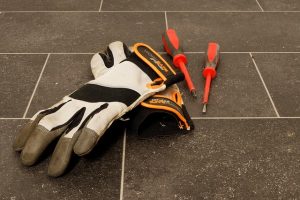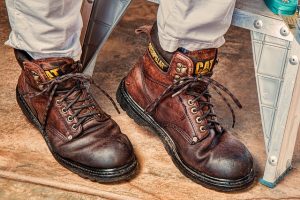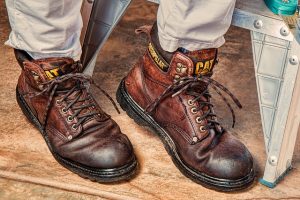 You want to get your money’s worth out of every safety harness, hard hat and pair of goggles, but push these items to their limit and you’re going to wind up with injuries and accidents on the jobsite that cost you a lot more than a few new helmets. Here are a few signs that it may be time to toss that old safety gear in the trash:
You want to get your money’s worth out of every safety harness, hard hat and pair of goggles, but push these items to their limit and you’re going to wind up with injuries and accidents on the jobsite that cost you a lot more than a few new helmets. Here are a few signs that it may be time to toss that old safety gear in the trash:
The 5 Year Expiration Date
Many safety items come with a five year expiration date. However, a safety harness is not a gallon of milk. The manufacturer has no way of knowing how much use that gas mask or safety harness is going to see. You definitely don’t want to strap yourself to a telephone pole with a six year old harness, but an item that gets a lot of use might not make it to year five. Think of the expiration date as a “definitely-no-later-than” date, not a guarantee of safe usability.
What Can Be Repaired?
Obviously, the strap will wear out on a pair of goggles before the lenses do. It’s a good idea to keep some extra straps around and replace them at the first sign of wear. Likewise, hard hats and gas masks often come with replaceable straps. Generally you don’t want to try and do any DIY mending on parts that can’t be easily replaced.
Signs Of Damage
A crack, a hole or a serious chip in a pair of goggles or a hard hat or in the buckles of a safety harness is a sure sign that it’s time to retire that piece of equipment. Any cuts along the straps of a safety harness, rips and tears in gas masks or other hazmat wear like gloves and safety clothing. It’s not a drinking glass or a desk fan, your life may depend on the integrity of your safety gear.
Signs Of Normal Wear & Tear
You’ll start seeing normal signs of wear and tear the minute you take a new hard hat out of the box. Little scuffs, scrapes and nicks are to be expected. Unlike a trust old wallet that’s been with you through good times and bad, this wear and tear can lead to total failure when you least expect. Once equipment starts feeling flimsy, thin, or you just can’t see through the goggles anymore, it’s time to pack it in.
It really comes down to a simple question: do you trust your equipment? Maybe a hard hat that sees some serious trauma but doesn’t show any obvious signs of damage has another good year in it, but do you want to stake your head on it?













